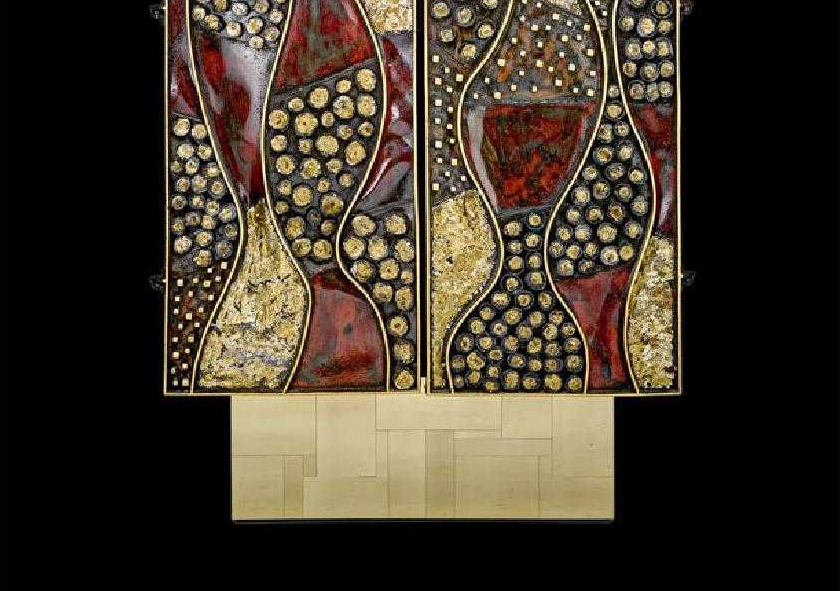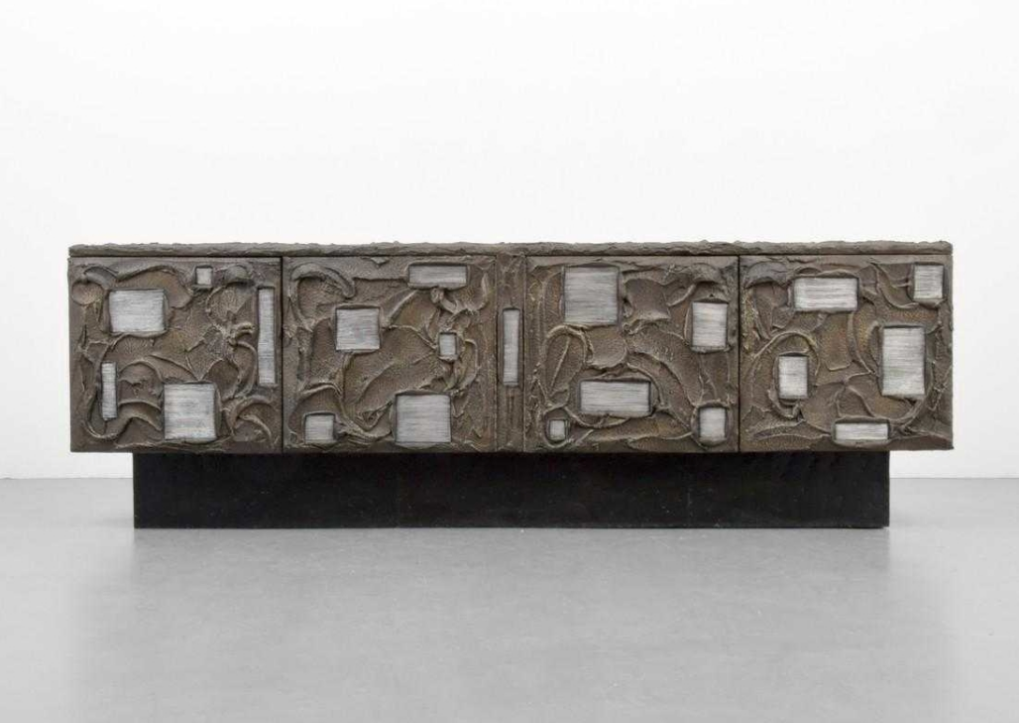
NEW YORK — Musician Lenny Kravitz, an ardent Paul Evans furniture collector, quipped in a recent documentary about the famed designer that Evans’ furniture is “stunningly beautiful, stunningly ugly, stunningly tacky, and stunningly sophisticated.”
Not only a furniture designer but also a sculptor and artist, Paul Evans (1931-1987) blazed his own path in the design world. His sculptural furniture, especially his metal-clad cabinets, is distinctive and highly coveted. Evoking the Brutalist style, Evans furniture has a rugged appearance, with each piece taking on an air of strength through its materials (mostly forged steel, bronze or aluminum) and creating dimension and depth from otherwise flat surfaces. Rather than creating a signature look, he pioneered several unique production techniques, and through exuberant and daring experimentation, he perfected his designs, creating a half-dozen lines of furniture, all the way helping to propel American studio furniture to new heights.
Born in Bucks County, Pennsylvania, where he spent most of his life, Evans studied at Rochester Institute of Technology’s School for American Craftsmen as well as Michigan’s famed Cranbrook Academy of Art, which drew many other notable artists and designers, including Ray and Charles Eames, Florence Knoll, Harry Bertoia and Eero Saarinen. After graduating from Cranbrook in 1952, Evans opened a studio in New Hope, Pennsylvania. where he began making his copper-clad chests and, later, sculpting steel-front furniture such as cabinets, sideboards and consoles.
In 2014, the James A. Michener Museum in Doylestown, Pennsylvania, not far from Evans’ studio in New Hope, mounted the exhibition “Paul Evans: Crossing Boundaries and Crafting Modernism,” to survey the designer’s work and pay tribute to his important place in the American studio furniture movement. “Constantly experimenting with new materials, technologies, and designs, his shop operated much like an industrial laboratory, and his highly innovative experimental approaches to metal have attracted an international following, especially over the past decade,” says commentary on the museum’s website.
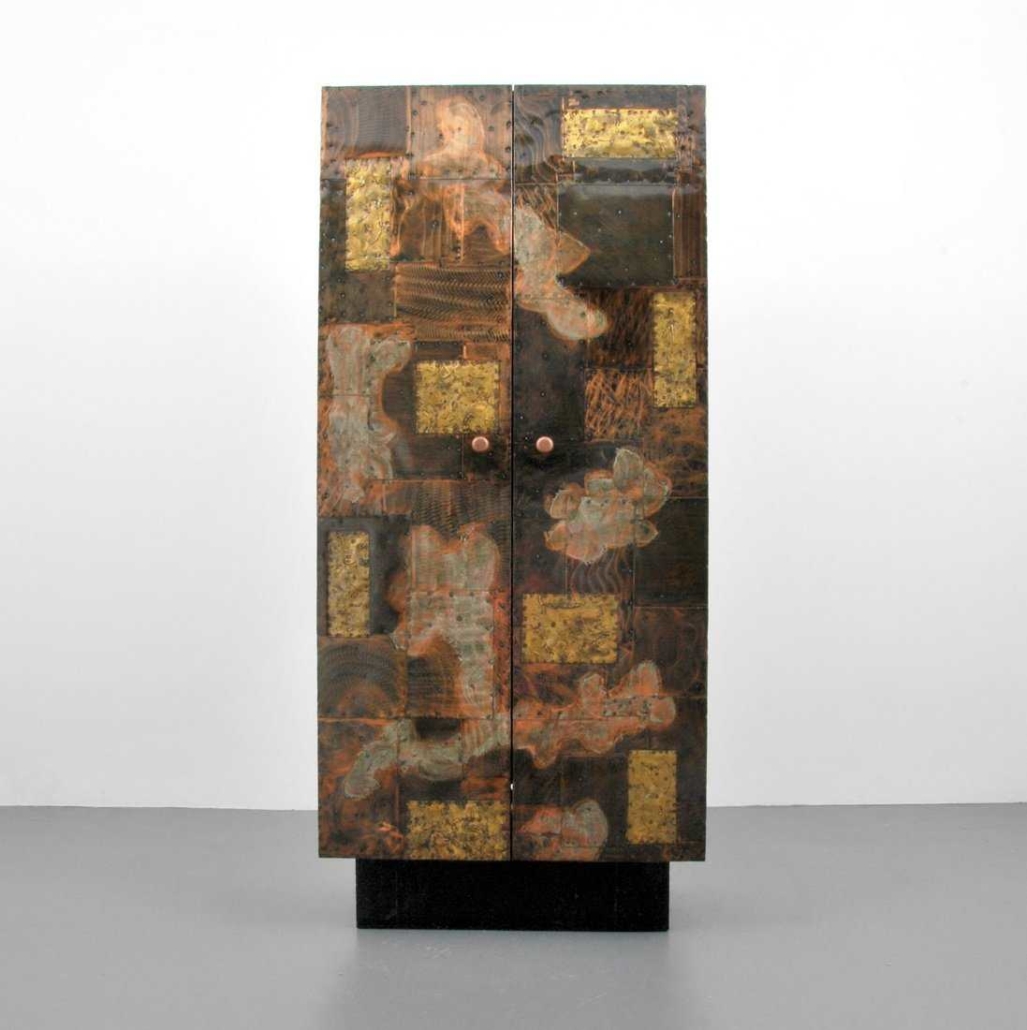
Evans is perhaps best known for his Cityscape, Sculpture Front, Argente and Forged Front series. Forged Front pieces are distinguishable by their facades, each composed of a geometric gridwork pattern of sculptured elements in metal. A short-lived series that began in the mid-1960s, the highly expressive Argente series grew out of Evans’ early work with aluminum casting. It involved rough and quick welds to create a three-dimensional look, with pigment-rich metal surfaces instead of flat-finish aluminum. The result resembled silver more than aluminum. It was in his Sculpture Front works that Evans best combined his first love for sculpture with design. By the late 1970s, at the height of the disco era, Evans launched his “Cityscape” furniture series, which reflected the era perfectly. His blocky shapes featured sleek mirrored surfaces and often incorporated mosaic patterns.
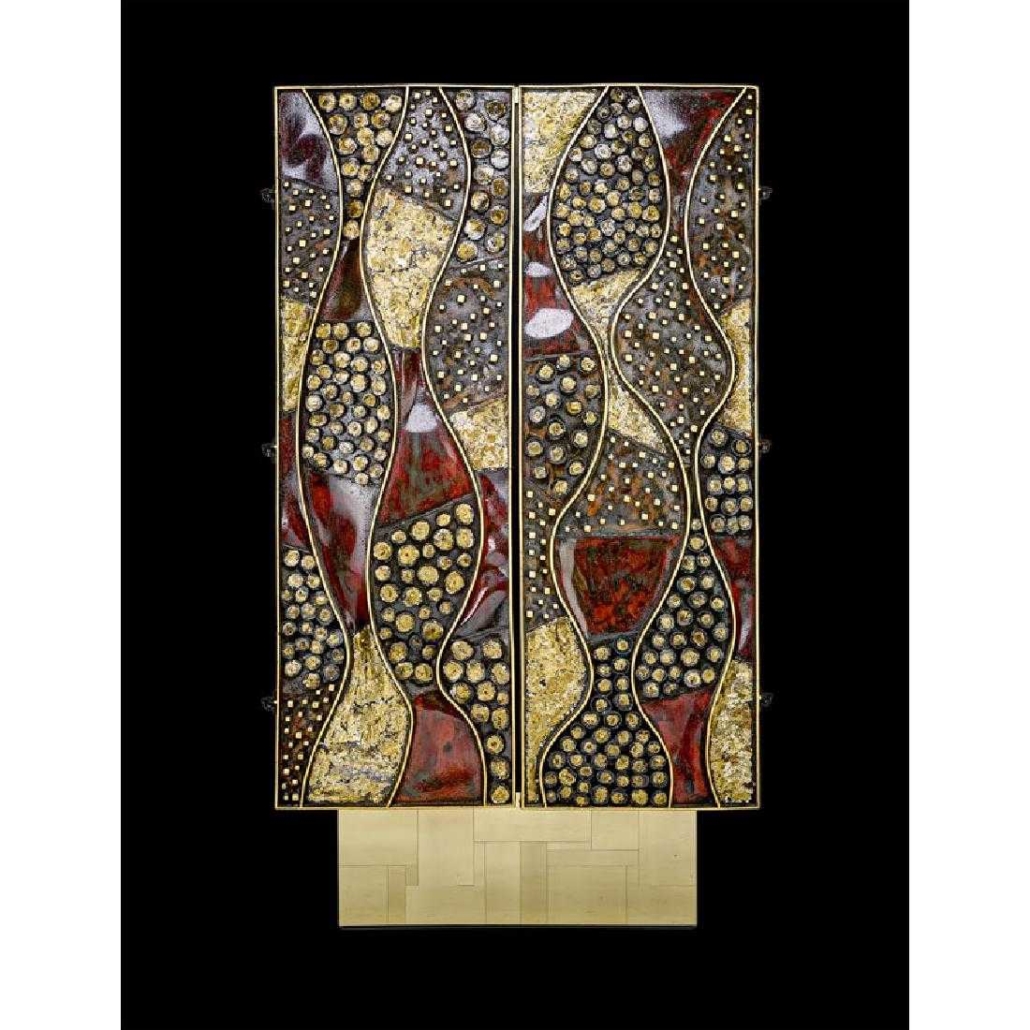
“Very early on in his career, the sculptural qualities of Evans work blurred the lines between art and furniture. People either love it or hate it, but Paul Evans brutalist furniture always evokes a strong reaction,” said Wade Terwilliger, president of Palm Beach Modern Auctions in West Palm Beach, Florida.
Terwilliger regards the Argente and Forged Front lines as being among Evans’ finest productions. “Studio pieces (hand-made) of welded and polychromed steel are highly sought after, with cabinets obtaining the highest auction prices,” he said. “The sculptural elements give each piece a unique and complex feel, and the Forged Front line often incorporates accents of gold leaf in addition to the painted elements.”
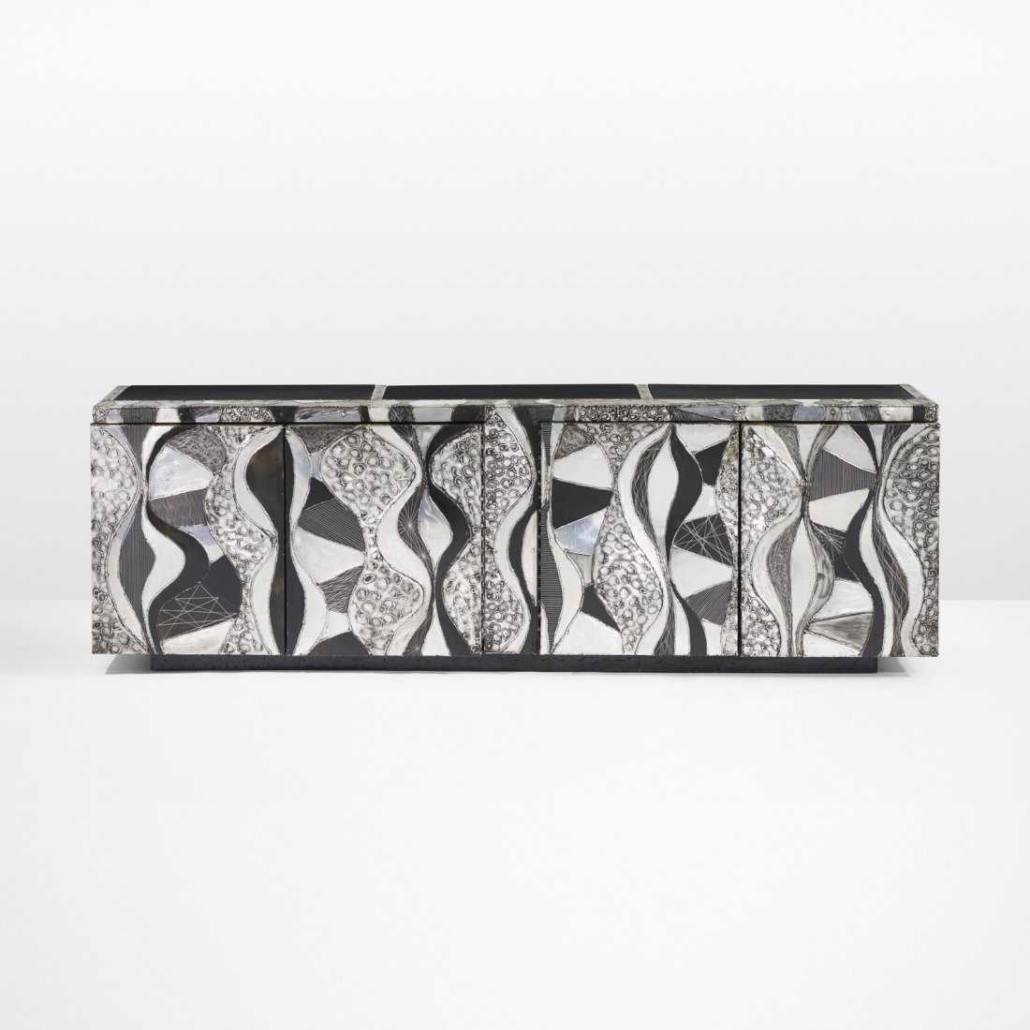
Evans was most prolific during in his partnership with the Directional Furniture Company, where he became a featured designer in 1964. His Forged Front works rank high in terms of desirability. “We have seen the cabinets do incredibly well at auction, with the Forged Front and Argente lines being at the forefront, followed by Faceted pieces,” said Terwilliger. “The sculptural PE-105 and PE-106 dining chairs are also noteworthy.”
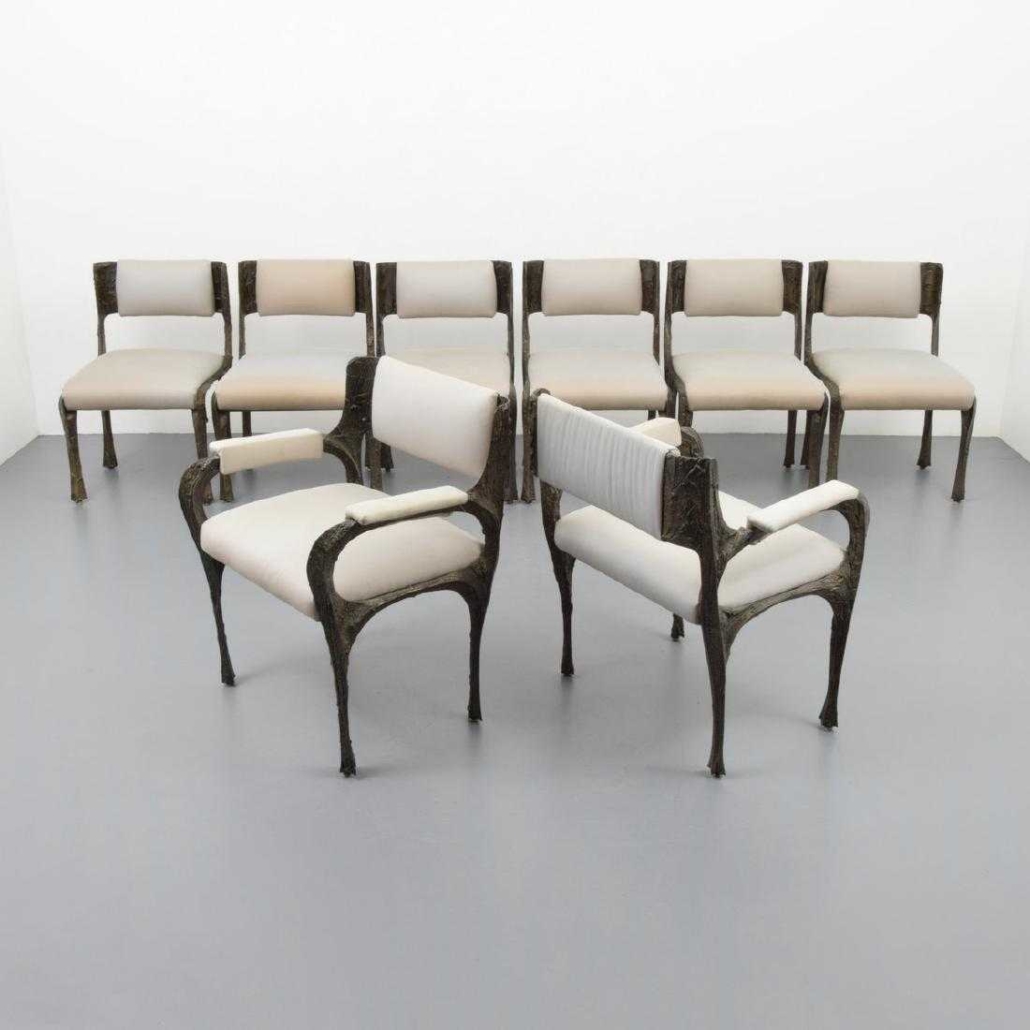
Palm Beach Modern has sold two sets of eight dining chairs by Evans — one in June 2018 and the other in November 2017. Each set sold for more than $48,000.
Some of the best examples of Evans works can bring five- and six-figure prices, so what is a good starting point for collectors? Some of Evans’ most accessible pieces come from the Patchwork line, a visual and middle ground between the slick chrome feel of the Cityscape pieces and the textural Stalagmite and Forged Front lines, Terwilliger said.
Paul Evans’ illustrious career spanned only three decades. Sadly, he died of a heart attack just one day after his retirement. Although his work fell out of favor for some time afterwards, it has enjoyed a tremendous resurgence in recent years, as a new generation comes to appreciate the work of a midcentury design master.
View more Paul Evans furniture online.
# # #


